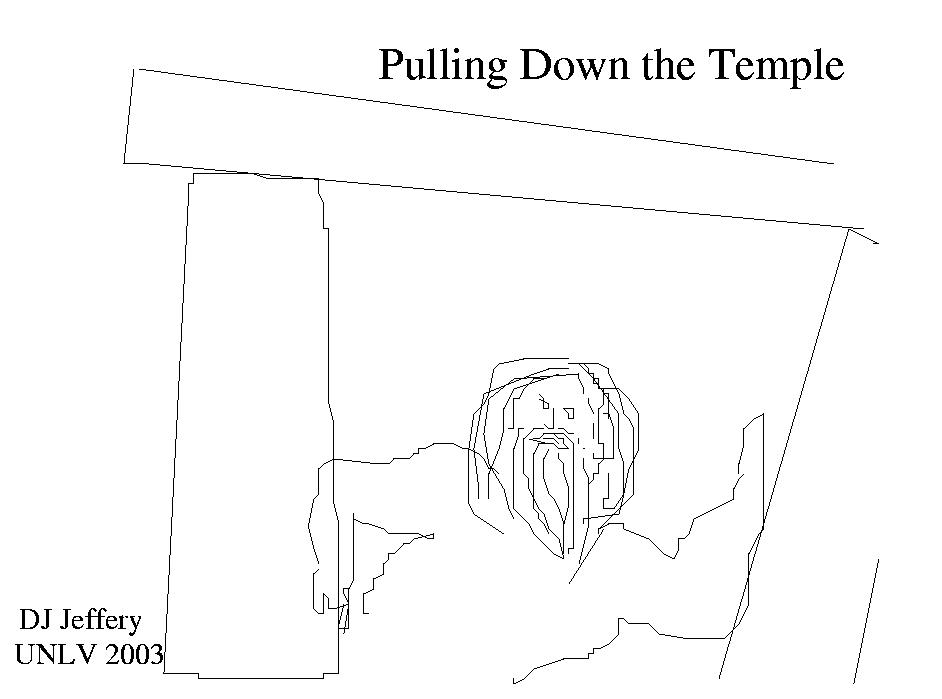
Caption: Samson pulling down the temple.
After his trial in 1633, Galileo lived on for another 9 years under house arrest at his house in Arcetri (in Florence, Italy). For an elderly and infirm person, house arrest was probably not too unbearable.
And he was still famous and sought out: for example, he was visited in sometime in the 1630s by Thomas Hobbes (1588-1679) (see The Galileo Project: Thomas Hobbes: Scientific Societies, scroll down ∼ 80 %) and in 1638 by John Milton (1608--1674) (see Wikipedia: John Milton: Study, poetry, and travel).
Galileo had to abandon astronomy, but that finally allowed him to focus his mind on writing up his discoveries and developments in physics and engineering.
The resulting book Two New Sciences (1638) had to be smuggled abroad to be published in the Netherlands in 1638. By this time Galileo, age 74, had become blind.
Galileo's physics was only a halfway point to Newtonian physics, but Galileo's approach to practical engineering problems and his concept of work done by machines were more useful to engineers of the 17th century and later centuries than Newton's original formulation of Newtonian physics (Cardwell 1994, p. 97).
Newtonian physics and materials science, of course, would eventually be shown to comprehend everything that was correct in Galileo's physics.
Two New Sciences was a book for the future in both theoretical physics and applied physics. But by implication, it also relegated Aristotelian physics and Aristotelian cosmology to history---Samson with a last effort pulling down the temple.
Credit/Permission: ©
David Jeffery,
2003 / Own work.
Image link: Itself.
Local file: local link: galileo_samson.html.
File: Galileo file:
galileo_samson.html.